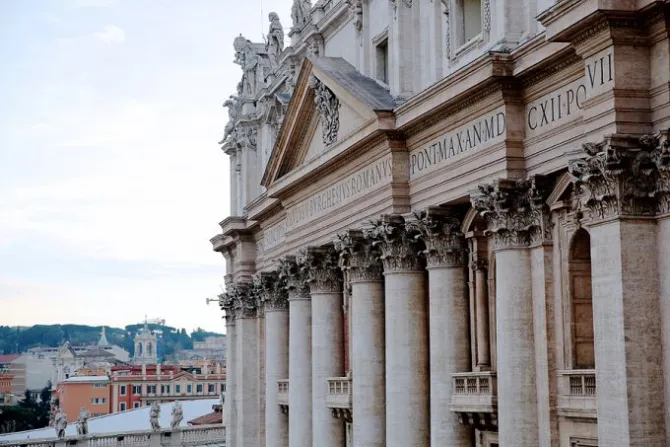Vatican City, Feb 22, 2017 / 07:19 am
On Wednesday the Vatican announced plans to monitor with a more careful eye those who print official images of the Pope or the Holy See and sell them for profit, intervening with "appropriate action" when necessary.
A Feb. 22 communique issued by the Secretariat of State said pointed out that among its various tasks, it also has "that of protecting the image of the Holy Father, so that his message can reach the faithful intact and that his person not be exploited."
Because of this, part of the department is dedicated to protecting "the symbols and coats of arms of the Holy See" through appropriate channels on an international level.
In order to make this "protective action" more effective and to "halt situations of illegality that arise," the department said they will begin carrying out "systematic surveillance activities apt to monitor the ways in which the image of the Holy Father and the coats of arms of the Holy See are used," intervening with "appropriate action" if and when needed.
The announcement came just weeks after posters critical of Pope Francis appeared on the walls and buildings of the city center of Rome, depicting a sour-faced pontiff with a list of grievances regarding his recent reform efforts.
A few days after the posters appeared and quickly went down, a spoof version of the Vatican's daily newspaper L'Osservatore Romano was sent to members of the Curia claiming the Pope had answered the five "dubia" on Amoris Laetitia sent to him by four cardinals in September, which were subsequently published.
However, the Vatican was quick to clarify that there was no link between the anti-Francis propaganda and the Secretariat of State's decision.
In a Feb. 22 communique, the Holy See Press Office clarified that Secretariat of State's decision to crack down on the illegal sale of papal symbols and images "does not originate from any recent news report," but is rather aimed at protecting the image of the Holy Father and his official coat of arms "against cases of illicit use and exploitation for unauthorized profit."
Paloma Garcia Ovejero, vice-spokesman for the Holy See, told journalists that the decision "deals with all things of value which are sold or used to earn money."
"We're talking about the product and the use of the image of the Pope or the Holy Father's coat of arms or that of the Holy See which are exploited" for economic purposes, she said.
"So no posters, no Osservatore...It has nothing to do with the posters or the fake Osservatore Romano," she said, "because they weren't sold."
The Secretariat of State's crackdown is a follow-up of their 2009 decision to issue a strict copyright of the Pope's name, image and symbols.
In the Dec. 19, 2009, statement announcing the copyright deal, the Vatican stressed that "it alone has the right to ensure the respect due to the Successors of Peter, and therefore, to protect the figure and personal identity of the Pope from the unauthorized use of his name and/or the papal coat of arms for ends and activities which have little or nothing to do with the Catholic Church."
"Consequently, the use of anything referring directly to the person or office of the Supreme Pontiff... and/or the use of the title 'Pontifical,' must receive previous and express authorization from the Holy See," the statement read.



